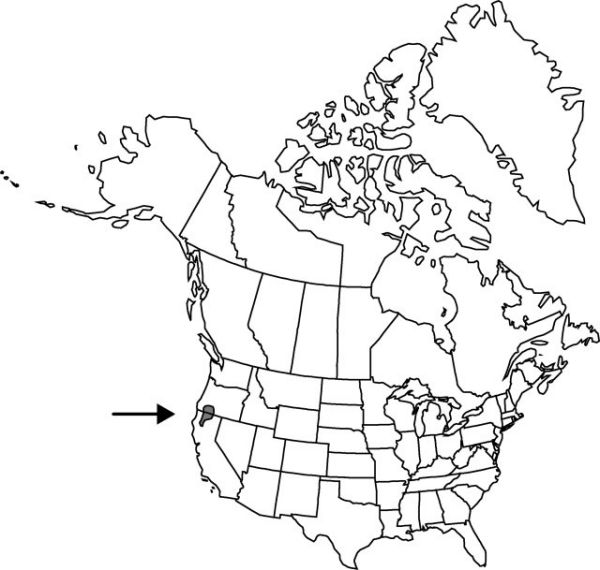Allium siskiyouense
Pl. Life 28: 63. 1972.
Bulbs 1–5, not clustered on stout primary rhizome, increase bulbs absent or ± equaling parent bulbs, never appearing as basal cluster, rhizomes absent, ovoid, 0.8–2 × 0.8–2 cm; outer coats enclosing renewal bulbs, grayish to brown, membranous, lacking cellular reticulation or cells arranged in only 2–3 rows distal to roots, ± quadrate, without fibers; inner coats pink to red, cells obscure, ± quadrate, or not visible. Leaves usually deciduous with scape, withering from tip at anthesis, 2, basally sheathing, sheaths not extending much above soil surface; blade solid, flat, falcate, 8–18 cm × 3–5 mm, margins entire. Scape usually forming abcission layer and deciduous with leaves after seeds mature, frequently breaking at this level after pressing, solitary, erect, solid, flattened, winged distally, wing margins commonly minutely serrulate proximal to umbel, 3–8 cm × 1–4 mm. Umbel persistent, erect, compact, 10–35-flowered, hemispheric, bulbils unknown; spathe bracts persistent, 2, 8–10-veined, ovate, ± equal, apex acuminate. Flowers conic to campanulate, 8–11 mm; tepals erect, pink, usually with darker-pink midveins, lanceolate to elliptic, ± equal, becoming membranous and rigid in fruit, outer margins entire, inner margins usually minutely denticulate distally, apex obtuse, margins becoming ± involute, appearing acuminate in age; stamens included; anthers yellow to light purple; pollen yellow; ovary crested; processes 3, central, 2-lobed, minute, margins entire; style linear, equaling stamens; stigma capitate, scarcely thickened, unlobed; pedicel 5–16 mm. Seed-coat shining; cells smooth. 2n = 14.
Phenology: Flowering late Apr–Jun.
Habitat: Heavy, rocky, clay soils, including serpentine
Elevation: 900–2500 m
Discussion
Allium siskiyouense is known only from the Siskiyou Mountains.
Selected References
None.
Lower Taxa
"thicker" is not a number."broad" is not a number.
